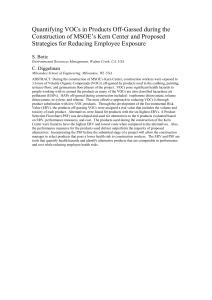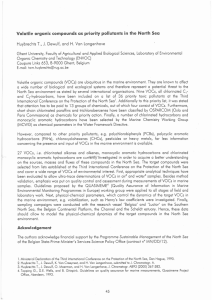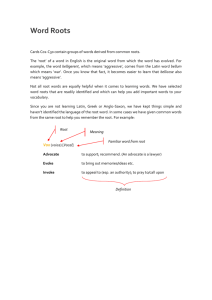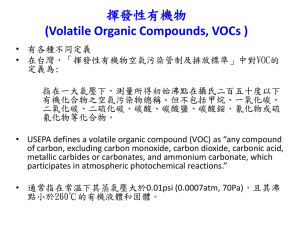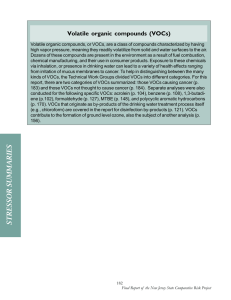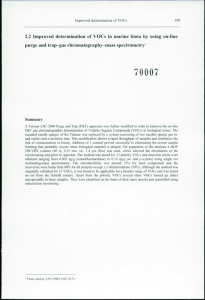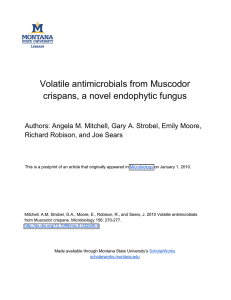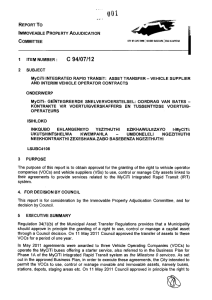Diapositive 1
advertisement
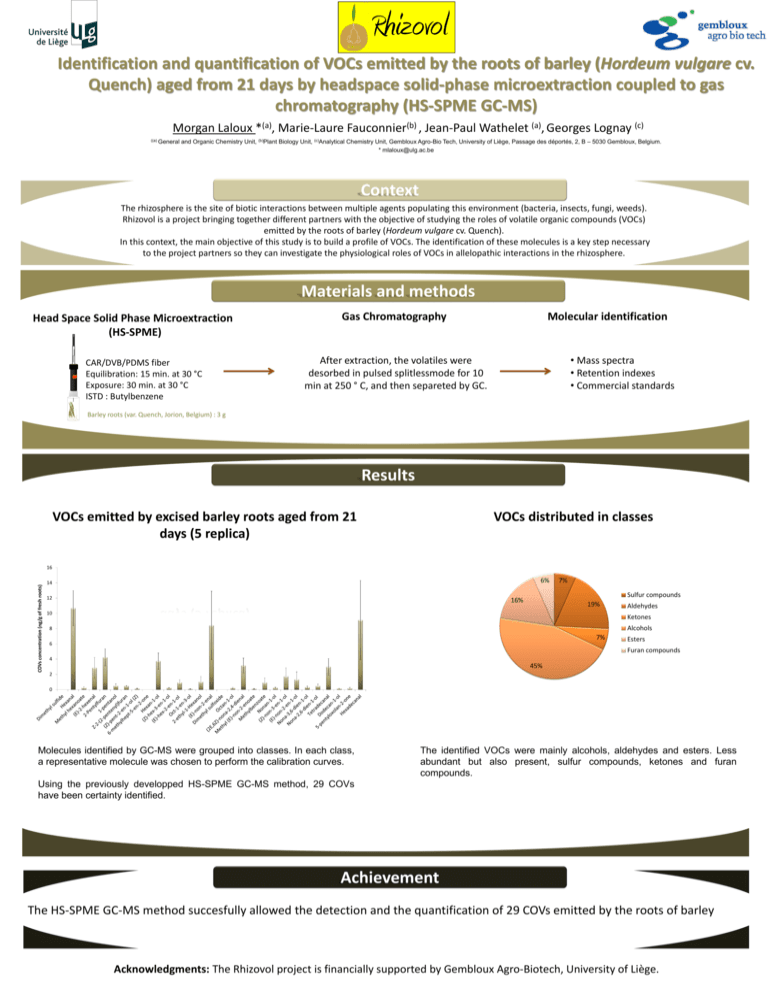
Identification and quantification of VOCs emitted by the roots of barley (Hordeum vulgare cv. Quench) aged from 21 days by headspace solid-phase microextraction coupled to gas chromatography (HS-SPME GC-MS) Morgan Laloux *(a), Marie-Laure Fauconnier(b) , Jean-Paul Wathelet (a), Georges Lognay (c) ((a) General and Organic Chemistry Unit, (b)Plant Biology Unit, (c)Analytical Chemistry Unit, Gembloux Agro-Bio Tech, University of Liège, Passage des déportés, 2, B – 5030 Gembloux, Belgium. * mlaloux@ulg.ac.be Context The rhizosphere is the site of biotic interactions between multiple agents populating this environment (bacteria, insects, fungi, weeds). Rhizovol is a project bringing together different partners with the objective of studying the roles of volatile organic compounds (VOCs) emitted by the roots of barley (Hordeum vulgare cv. Quench). In this context, the main objective of this study is to build a profile of VOCs. The identification of these molecules is a key step necessary to the project partners so they can investigate the physiological roles of VOCs in allelopathic interactions in the rhizosphere. Materials and methods Head Space Solid Phase Microextraction (HS-SPME) CAR/DVB/PDMS fiber Equilibration: 15 min. at 30 °C Exposure: 30 min. at 30 °C ISTD : Butylbenzene Gas Chromatography Molecular identification • Mass spectra • Retention indexes • Commercial standards After extraction, the volatiles were desorbed in pulsed splitlessmode for 10 min at 250 ° C, and then separeted by GC. Barley roots (var. Quench, Jorion, Belgium) : 3 g Results VOCs emitted by excised barley roots aged from 21 days (5 replica) VOCs distributed in classes COVs concentration (ng/g of fresh roots) 16 6% 14 12 7% Sulfur compounds 16% 19% 10 Aldehydes Ketones Alcohols 8 7% 6 Esters Furan compounds 4 45% 2 0 Molecules identified by GC-MS were grouped into classes. In each class, a representative molecule was chosen to perform the calibration curves. The identified VOCs were mainly alcohols, aldehydes and esters. Less abundant but also present, sulfur compounds, ketones and furan compounds. Using the previously developped HS-SPME GC-MS method, 29 COVs have been certainty identified. Achievement The HS-SPME GC-MS method succesfully allowed the detection and the quantification of 29 COVs emitted by the roots of barley Acknowledgments: The Rhizovol project is financially supported by Gembloux Agro-Biotech, University of Liège.

